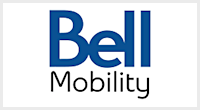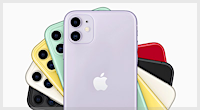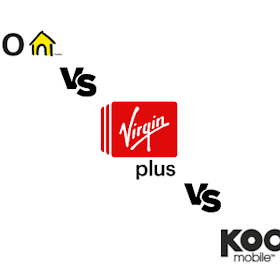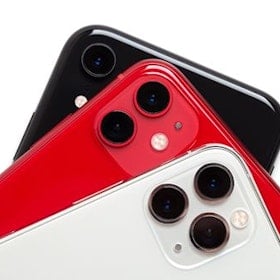Switching cell phone providers sounds like a daunting task, but it’s actually quite easy. In most cases, it’s as simple as finding a new plan, contacting the carrier, and asking its customer support to handle the rest. Keeping your current phone number, or porting it to a new service provider, is also a simple process, so long as you follow a few basic steps.
In this guide, we break down everything you’ll want to do before you start that process, including researching a new cell phone plan and checking for cancellation fees. Then we walk you through transferring your phone number from your old carrier to your new one.
Read on to learn everything you need to know about switching to a new cell provider and keeping your number in Canada.
Why switch to a new carrier?
Sometimes it's advantageous to switch between carriers when your contract is up. In Canada, the Big Three are very competitive with each other and want to hold the mindshare in the country. This can work to your benefit in many ways.
When approaching a new carrier, you can often use your existing plan, pricing, etc., as a bargaining chip to get some great deals or incentives on another carrier's plan. When speaking to a representative at a new carrier, you can discover new customer incentives and other benefits for simply jumping ship from one to another.
You may also find that another carrier offers better service than the one you're currently with. With Rogers, Bell, and Telus all investing in 5G connectivity at different rates, you may want to go with a carrier offering the best coverage in your area.How to switch cell phone providers in Canada
Switching phone carriers doesn’t have to be complicated. Follow these steps to make activating your new plan as easy as possible.
1. Find your IMEI number
Your phone’s IMEI number is a unique identifier for your device, sort of like your phone’s fingerprint. You’ll need it when checking network compatibility and switching to a new carrier. You can find your IMEI by typing *#06# into the Phone app.
2. Check network compatibility
While looking for a new plan, make sure your device is compatible with the carrier’s network before committing to the new plan. Most carriers in Canada allow you to check device compatibility online by simply entering your IMEI number. If your desired carrier doesn’t offer an online option, call their customer service line or visit a retail location to confirm with a sales representative if your phone will work on their network.
3. Find a new plan
Before you cancel your current plan, ensure you’ve found a new one that meets all your needs. Don’t know where to start? We collected the best cell phone plans in Canada to make your search for a new carrier a cinch.
Are you looking for basic connectivity and a cheap monthly payment? Consider a prepaid plan that offers talk and text and small amounts of data. If you’re using your phone for gaming, streaming, or videoconferencing, an unlimited plan should fit the bill, which provides massive chunks of full-speed data.
You should also consider the carrier's coverage in your area. All major carriers offer 5G networking in Canada, though both Telus and Bell offer a wide range of 5G coverage outside of metro cities. Determine which carrier supports the best network in your area, as coverage varies across each province and rural location.
4. Review your new carrier's eligibility requirements
Some carriers have eligibility requirements for new customers, including minimum credit scores, a paid-off device you want to bring over, and a paid-off balance with your current carrier. Read the terms and conditions of your new plan so you can be sure you meet any requirements the carrier might have.
5. Pay down the balance on your current plan
If you paired a new phone with your current plan and received it at a reduced upfront price, you’ll need to pay the remaining balance.. This payment needs to happen before you can transfer your service, so be sure that you read and understand the fine print. If you need clarification, you should contact the carrier directly. You should not, however, cancel the services with your current carrier—leave that to your new provider.
6. Prepare for early cancellation fees
If your last mobile plan was under contract and you’re looking to switch before the term ends, you’ll be stuck with an early cancellation fee. The maximum early cancellation fee is $50, as per the CRTC’s Wireless Code of Conduct, unless you received a free or discounted phone. Customers who received that perk must pay the remaining amount of the discount received, as mentioned above.
Once again, if you need clarification, you should contact your carrier directly.
7. Switch cell phone providers
Contact your new carrier’s customer support, letting them know you’d like to switch to one of their plans. You can do this over the phone or in person if the carrier has retail stores. Most providers also have pages on their websites dedicated to switching providers, making the process even easier.
The new provider will cancel your current service and start your new plan. These changes will happen immediately, though you can request the services end at a later date if you’d prefer.
How to keep your number when switching carriers
If you follow the instructions above, you’ll be able to transfer your phone number to a new carrier—a process known as number porting. As part of the Wireless Number Portability (WNP) protocol, Canadians are able to change service providers and keep their existing phone number.
If you’re transferring the number from one mobile plan to another, the change will happen within a few hours. If you’re transferring the number from mobile to landline or vice versa, the porting process can take a few days.
Be sure to follow your new carrier’s instructions for activating a new plan. If you bring your own phone to a new plan, you’ll need a new physical SIM card or an eSIM from the new carrier.
If you’re using a device purchased before 2018, it may need to go through an unlocking process before it can activate with your new plan. Be sure to read our guide to unlocking your phone in Canada to learn everything you need to know before unlocking the device. If you purchased your phone in 2018 or after, there’s no need to do anything: Your phone was sold unlocked.
After you switch carriers
You've done it! You found a better plan and kept your phone number. You may have to wait as many as two or three hours (if you don’t need to wait for a physical SIM card), but your new phone plan (and maybe a new phone) should be ready to go. With the same phone number, there's no need to tell family and friends to update your contact information.
Install carrier support apps
Most carriers have a "My Account" app that lets you keep an eye on your data use, check your plan, pay your bill, and find out if you're eligible for upgrades. Some carriers like Virgin Mobile and Fido sweeten the pot with "Benefits" apps that get you everyday deals and discounts on food, fashion, and entertainment.
Search the App Store on iPhone or the Google Play Store on Android smartphones so that you can always keep track of your new plan.
Check that last bill
Your old carrier will send you a final bill. If there are outstanding costs on a contract, then you'll need to pay them. Make sure there are no nasty surprises. Once you pay your last bill, you're free and clear to enjoy your new cell phone plan!
Check that first bill
Likewise, your new cell phone plan provider will send you an invoice. Bills are usually sent by email, or you need to log into the carrier's website to see it.
Use this chance to make sure everything is correct. It's harder to argue that you're not on the right plan after a few months pass.
BYOD vs. getting a new smartphone
Scoring the latest iPhone or Android is great, but so is saving on your monthly bill. Should you bring your own device or grab a new smartphone with your new plan? Let’s break down the pros and cons.
Bringing your own device: pros and cons
Most Canadian wireless plans allow customers to bring their own devices. In fact, many of them encourage it, offering discounts and incentives for those who do. New smartphones, even cheaper models like the Motorola Moto e15 and the Samsung Galaxy A06 4G, can cost hundreds of dollars.
If you have an older device, you likely won’t be able to maximize your carrier’s plan if it’s geared toward the latest and greatest smartphones. Likewise, you might not be able to rely on the carrier’s customer support team if you have problems with your phone. Instead, it’ll be up to you (and the depths of the internet) to figure out how to resolve any technical issues you might have.
All things considered, if you already have a functional device you like, it’s in your wallet’s best interest to bring your own phone to your new plan.
BYOD Pros:
- Cheaper monthly payments
- Additional bill credits
- No-contract option
BYOD Cons:
- Dated hardware
- Limited customer support
Getting a new smartphone: pros and cons
We understand why you’d want to pair a new smartphone with your new plan: Devices like the iPhone 17, Google Pixel 10, and the Samsung Galaxy S25 are the best smartphones on the market, with impressive cameras, lightning-fast processors, and long-lasting batteries. If you’re a techie looking to maximize all that your new plan offers, it’s tempting to snag one of the best handsets while you’re shopping for a new plan.
That being said, new smartphones can be expensive, especially in Canada. The newest phones on the market will run you over $1,200 outright, and financing will lock you into a two-year contract.
It's strongly recommended to back up your phone before switching to a new device. If you’re looking for the best device available, then pairing a new smartphone with your new plan makes sense. But if you like your current device, we recommend bringing it to your new carrier.
New smartphone Pros:
- 5G capability
- Top-notch speeds and features
New smartphone Cons:
- Expensive monthly payments
- Contract required for financing
FAQs
Related Articles
Find Better Phones and Plans
Hundreds of cell phone plans unpacked. All the facts. No surprises.








































